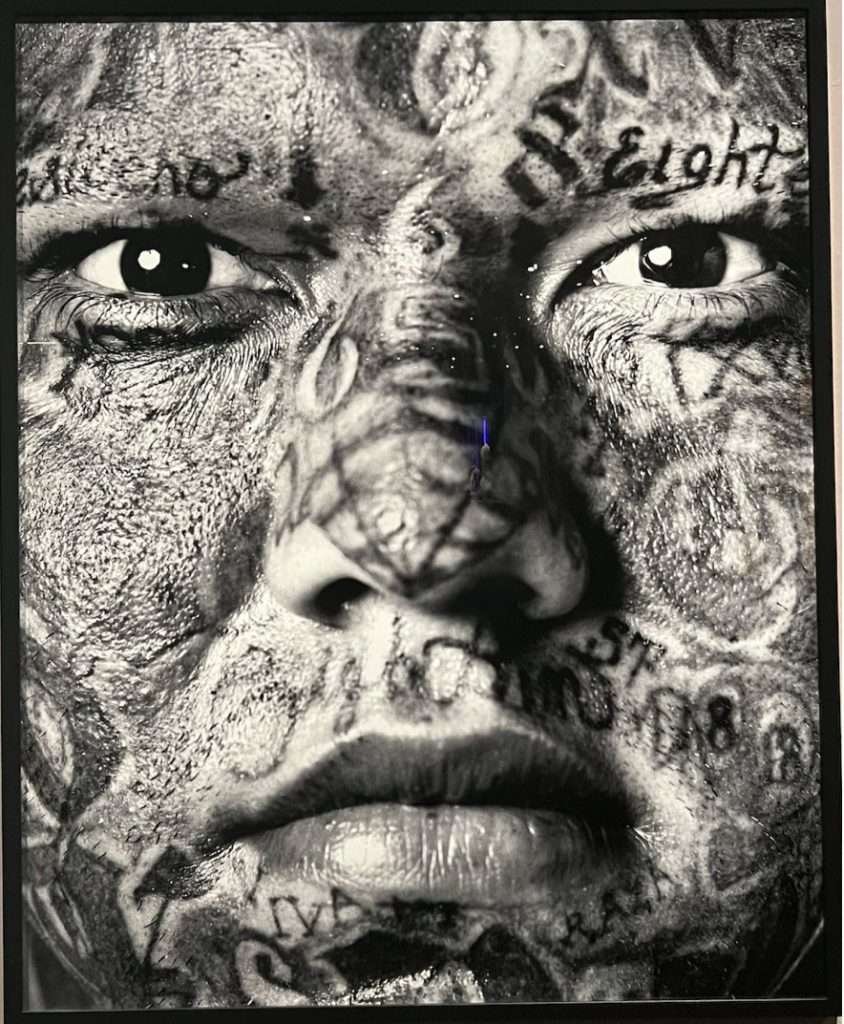What are tattoos? How is this art form tied to our culture, bodies, and, most importantly, history?
“Tattoo. Art Under the Skin” exhibition at the CaixaForum aims to answer these questions and more.
Tattoos are riddled with mystery and exemplify the long-held belief that art is a universal language that crosses cultures and connects us all. With over 240 contemporary and historical works, Art Under the Skin is the largest exhibition on the history of tattoos and a must-see.
The exhibition begins with silicon models by world-famous artists. An arm tattoo by Brian Gomes showcases the field of tribal tattooing, with inspiration from Amazonian cultures, while a back design displays Alexander Grim’s medieval iconography. This collection includes striking patterns and imagery, making each description a delight to read. From the American fine to the Russian Gulag to the stark French line, the exhibit explores how different techniques arise and if they influence one another. Works like “Tiger in the Vapor” display how westerners such as Ed Hardy were influenced by Japanese tattooing styles when surrounded by traditional Japanese environments.


The exhibition describes how tattoos developed in China, Thailand, Indonesia, and Europe. In China, tattoos were outlawed for going against Confucian ideals, and similarly, in Europe, Christianity prohibited tattoos. However, in places like Taiwan, indigenous groups see tattooing as a sign of beauty and protection. In many ways, tattoos hold cultural traditions together in a time of assimilation. The exhibit includes photographs of women from the Kalinga ethnic group who do batok tattoos using grapefruit thorns and bat claws. These looks into small, rare groups make the exhibit a window into cultures and traditions otherwise unavailable to us.
Eventually, in both Europe and China, tattooing became normalized when the nations became part of a globalized culture, as even European royalty had tattoos in court.
We can see how tattoos can act as a cultural record. In Japan, tattoos were originally used as military punishment but were eventually reintroduced in the 19th century. They became a representative of Japanese culture as the tattoo’s iconography was inspired by Japanese folklore and religion.
Tattoos are an intriguing art form; no other art has been as banned and prohibited as these designs. They can be integral to specific cultures while being banned in others. These historical restrictions on tattoo art make the exhibit all the more revealing.
The exhibit explores each nation and provides examples of artists’ work. One of my favorites was portraits of Spanish prisoners by Isabel Munoz. She photographed members of the MS-13 and MS-18 gangs, who were covered in tattoos that prove their loyalty. Another standout work was photographs staged by Masato Sudo in 1984, where he photographed bodies of tattoos in exciting positions to make an even more artistic image. It was an aesthetic perception of Japanese tattooing that aimed to exclude the association of tattoos with organized crime.

Caixa Forum’s exhibit is open through the end of August. Its colorful displays, unique cultural designs, and real-life photographs of full-body tattoos make for an unforgettable visit. By the end of the exhibit, there will be no doubt in one’s mind that tattooing is not only an art form but one of the oldest, universal forms of art-making.
By Kathryn Dorfman
About the author
My name is Kathryn Dorfman, and I am a rising junior at the University of Michigan, double majoring in Creative Writing and Psychology. I am studying abroad in Barcelona for 8 weeks and am so grateful to have the opportunity to write for Frikifish. As the granddaughter of two artists, I learned to draw before I learned to walk, and can not wait to experience all the art Barcelona has to offer. In my free time I enjoy singing, painting, and reading. I look forward to writing and hope you enjoy my discoveries!




Thanks for your interest in art & creativity on FrikiFish— a one-woman labor of love, providing free content and services to artists, art-lovers and creative projects in-and-around Barcelona. This project runs on caffeine and community love, please consider supporting with a donation or a cup of coffee. Thank you!